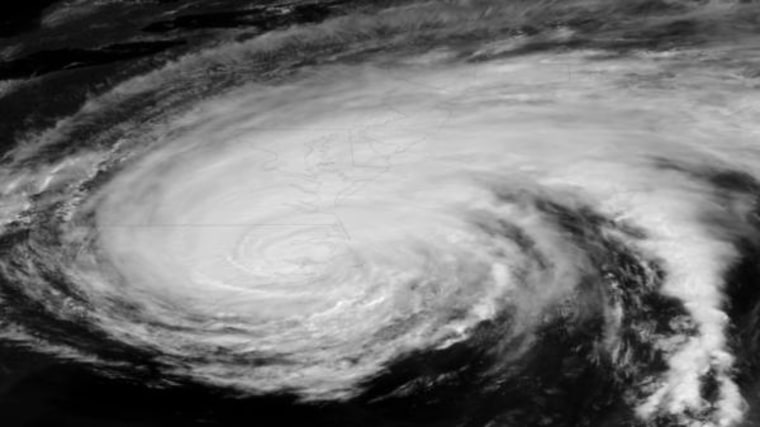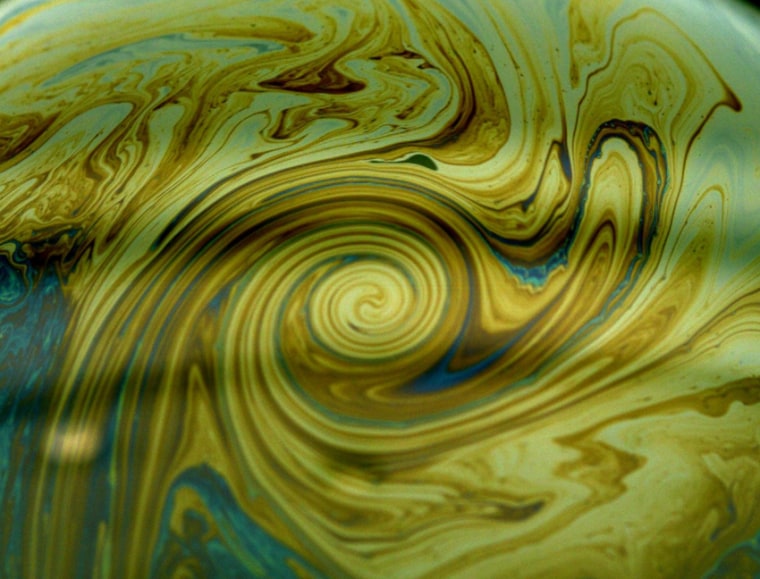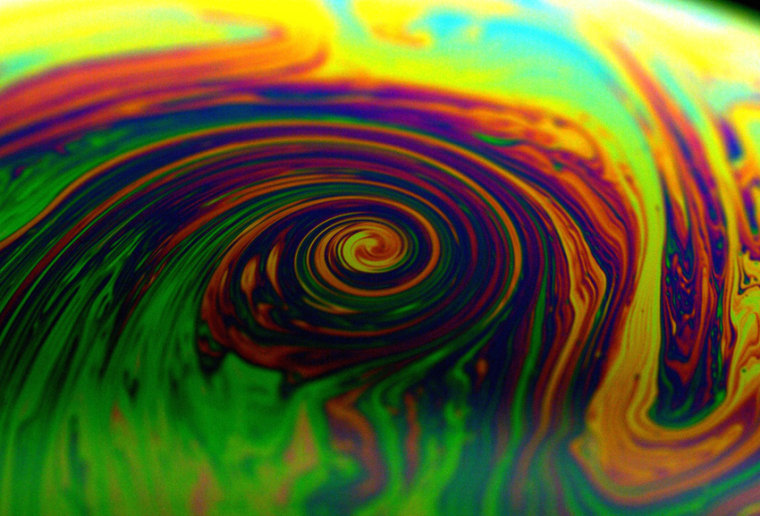Although it's well-known that a tempest sometimes shows up in a teapot, it turns out that something smaller and far more ephemeral — a soap bubble — can also accommodate a squall.
Such was the discovery of a group of physicists at the University of Bordeaux; when they heated hand-size soap bubbles, vortexes of color swirled into action and went dancing across the delicate orbs.
"Soon after we started seeing these things, we thought, 'Wow, that looks like a hurricane,'" said Hamid Kellay, a professor of physics at the French university.
An experiment was born. By studying the motions of the mini-soap storms, the group developed a mathematical model that can project, in part, the trajectory of a tropical cyclone — the umbrella term used to describe tropical storms and hurricanes. The research was published Thursday in the journal Scientific Reports.

Wandering storms
Kellay said the movement of a soap bubble vortex doesn't follow a perfect curve or a perfect straight line, but it does have direction. "It's like a drunken man's walk," he told OurAmazingPlanet. "It will go from point A to point B, while still following a main path."
The team developed a model to project where a vortex would end up, based on measurements of its initial wanderings. Kellay said the same model, which requires three basic sets of data, also works on a much grander scale, and can forecast the track of a hurricane or tropical cyclone.
The group analyzed more than 500 storms, and found that the model delivered forecasts that were comparable to those issued using existing track-forecast models — essentially, the forecasts that predict where a storm will go, and when.
"It is certainly novel that the authors have compared the vortices in a soap bubble to a hurricane — they are both vortices," said Jonathan Vigh, an atmospheric scientist at the National Center for Atmospheric Research in Boulder, Colo., who studies tropical cyclones and was not involved in the soap bubble research.
However, he said, it's important to note that a hurricane is far more complex than a soap bubble vortex. It's a three-dimensional system that is pushed and pulled from many directions, and affected by a huge number of ever-changing factors in its immediate environment. Because the model can't account for all of these influences, it applies mainly to the early portion of a track forecast, Vigh said, and may not be effective for predicting when a mature hurricane will veer in a vastly different direction, as the storms often do. [ Images: Hurricanes from Above ]

Tracking triumph
As it stands, the models that U.S. agencies use to forecast where a hurricane will hit have vastly improved in recent decades. "I would say track forecasting is one of the great success stories of hurricane forecasting," Vigh said. The five-day track forecasts of today are as good as the three-day forecasts of 30 years ago, Vigh told OurAmazingPlanet.
However, he said, the soap-bubble research is scientifically interesting. "This might add to our knowledge of small-scale variations in tropical cyclones," Vigh said.
And, he added, a simple model for forecasting where a hurricane may end up could be quite valuable in parts of the world that suffer the effects of dangerous storms, but don't possess the United States' enviable technological infrastructure.
"In other basins where people don't have access to supercomputers, there might be some use for this," Vigh said.
For the Bordeaux physicists, the research has yielded a new way to describe turbulence, which is Kellay's specialty. "You get vortices in hurricanes but you get them in turbulence in general," Kellay said. "It's important to understand how they move if we want to model certain things even better than we can today — like having a basic law for turbulence itself."
As for tracking the vortex of a hurricane, Vigh said that in spite of the leaps forward, there's always room for improvement. "No matter how big or strong the storm is, if you have it in the wrong spot it's hard to tell people to get out of the way," he said.
Reach Andrea Mustain at amustain@techmedianetwork.com. Follow her on Twitter @AndreaMustain. Follow OurAmazingPlanet for the latest in Earth science and exploration news on Twitter @OAPlanet. We're also on Facebook and Google+.
